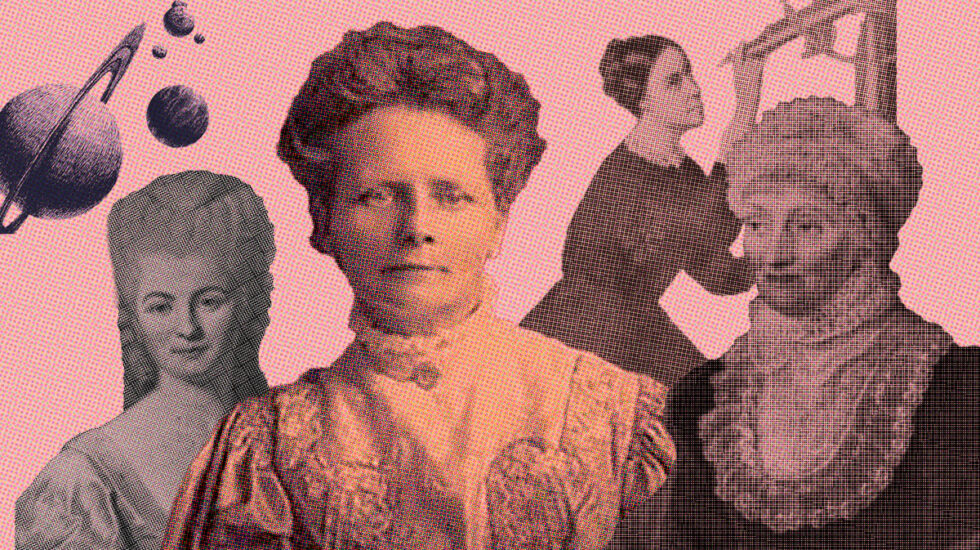

Halley is one of the most famous and brightest comets orbiting the Sun. It does this on average every 75 years and bears the name of the British astronomer Edmund Halley, because it was he who stated that from time to time it approaches our planet. This is something that transcends all history, because the one who actually discovered it was a French astronomer and mathematician, Nicole Rain Lepo (1723-1788). One of the many women who lived in the shadows and whose discoveries were omitted by a male name.
She wasn’t the only one. Writers, artists, journalists, scientists… For years, women of all professions have been excluded from any kind of recognition. In fact, to this day, women in science still have a long way to go. lack of links makes me so lonely 5.2% of girls expect to work in science and technology., compared with 15.3% of boys. In universities, only 25% of those who choose STEAM degrees (a term derived from the English words “science”, “technology”, “engineering”, “art”, “mathematics”), according to a report prepared by the Ministry of Education.
Their names have survived through the ages, but they were also part of these discoveries. Caroline Lucrezia Herschel (1750-1848) was the first woman officially recognized as an astronomer, she identified a comet between Ursa Major and Berenice, and while observing the Firmament, she discovered many yet unidentified stars.
Maria Winkelmann discovered the comet, but the credit goes to her husband, although he admitted before his death that it was his wife who actually discovered it.
The comet he discovered was named C/1786 P1, although it was later known as the “first lady” comet. When Caroline announced the discovery, she did so with her brother William Herschel, who was her right-hand man. It was thanks to him that he fully entered the world of astronomy, and together they built their own telescopes and observations, for example, they found the first evidence of the existence of gravity outside the solar system.
His brother William was a musician, but gave up this business to take up astronomy. Caroline followed in her footsteps and although her mother was determined to focus on being a housewife, she began her career as a scientist. His brother has already made a name for himself in the world. He was Astronomer Royal, and when she was 37 years old, King George III gave her a salary as his brother’s assistant. Fifty pounds a year for her, two hundred for him.
Maria Winkelman (1670-1720) was another woman who lived in the shadow of a man, in this case her husband Gottfried Kirch. Her father believed that women should receive the same education as men, so he encouraged her to study and she focused on astronomy. He did this hand in hand with Christopher Arnold as assistant and student. And later, having met the already famous astronomer Gottfried Kirch, she married him, despite the 30-year age difference, and became his assistant.
Although he was appointed as the official astronomer of the Academy of Sciences, also known as the Berlin Academy, she was denied an (official) position despite already working as an assistant. He also took credit for the discovery of the comet, which they dubbed C/1702 H1, although he admitted before his death that it was his wife who had actually discovered it. Nevertheless, Maria during her lifetime never received an award for the discovery of a comet..
There were many who left a mark on history and opened the first doors to the world of science for women. Maria Mitchell (1818-1889) was the first woman admitted to the American Academy of Arts and Sciences. She devoted her life not only to science, but also to the struggle for women’s rights.
He belonged to the Quaker family, that is, a religious community in which boys and girls received an equal education. In addition, her father studied science and astronomy, he taught his daughter the trade and allowed her to fully immerse herself in this subject.
In fact, she lived at the telescope and spent hours looking at the vault of heaven. At one of these moments, he discovered a comet. His father, William Mitchell, along with other influential astronomers, encouraged him to show his discovery, but Maria was afraid that she would be looked down upon because she was not a man.. Upon learning that the King of Denmark, Frederick VI, was an amateur astronomer and offered a medal to anyone who discovers a new comet, Mary was inspired. It was Christian VIII, the successor of the monarch who died in 1839, who finally presented the medal to Mary Mitchell a year after the discovery of the comet.
Maria was one of the women who achieved public recognition during her lifetime. In addition to the discovery of the comet, he also succeeded in charting the movements of the planet Venus on a chart, a discovery that today serves as a guide to sailing on the sea.
He even traveled around Europe with some of the most important astronomers of the time. She created the American Association for the Advancement of Women precisely with the aim of ensuring that women receive the same pay as men for the work they do.. And she became a teacher at the prestigious Vassar College (New York State) for girls.
She traveled around Europe, interacted with the most prominent astronomers of her time, and already in adulthood agreed to become a professor at Vassar College, where she repeated to her students that they deserved the same as men. Among others, Maria Mitchell was one of the women astronomers who took a key step for the next.
Source: El Independiente